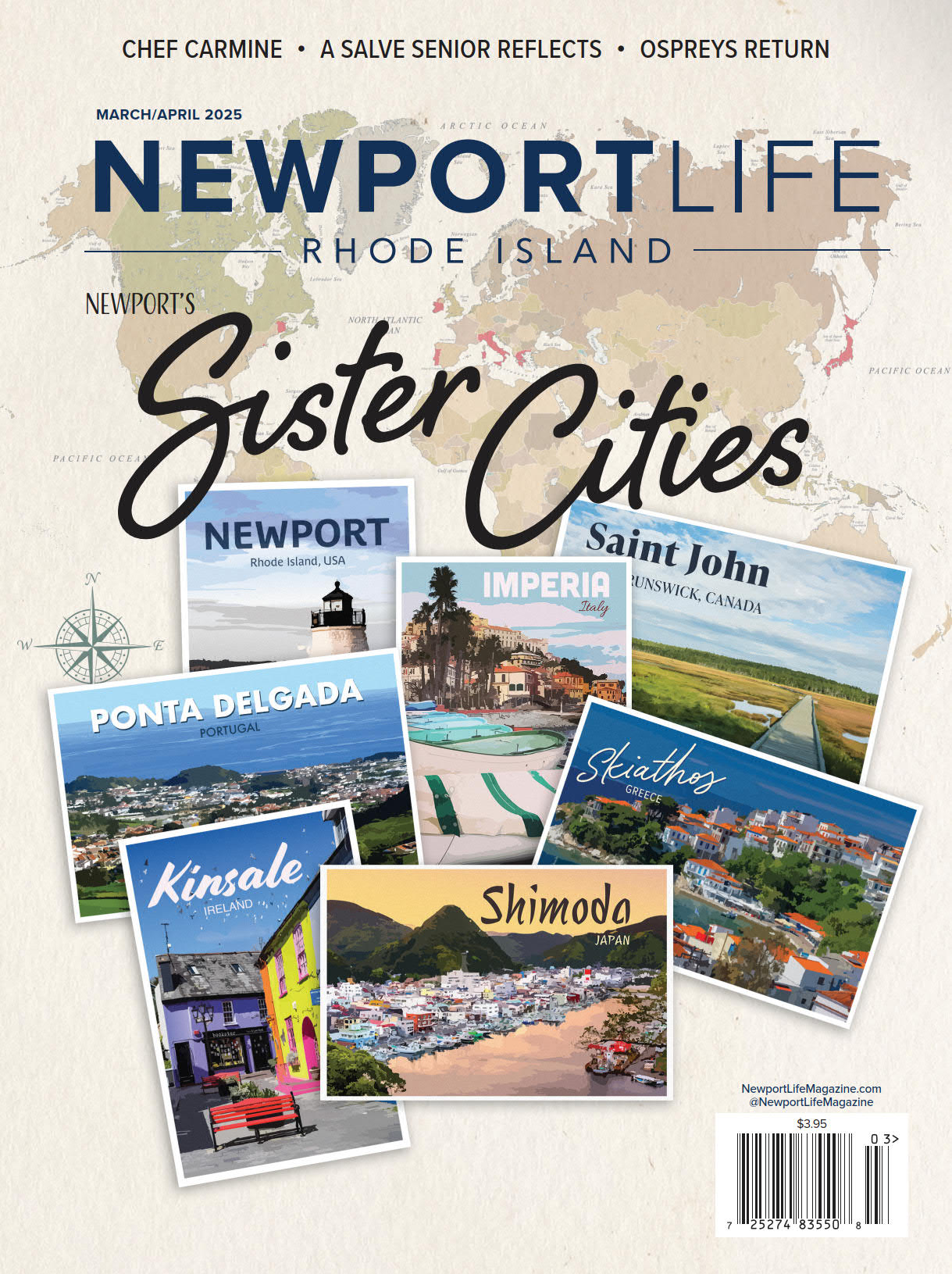Slim Aarons, famed photographer, is focal point of new exhibition: “His influence is everywhere”
By Helena Touhey
Redwood Library hosts “Slim Aarons: Newport Days” showcasing photos spanning several decades in partnership with Getty Images and Newport Curates
Photos courtesy of Getty Images
The images begin with black and white scenes, among them a vintage car making its way down Bellevue Avenue in 1947 and Jacqueline Bouvier — soon to be Kennedy — at the Newport Casino during Tennis Week in 1953. As the years progress, the photographs shift into color, capturing the Cushing brothers surfing at Bailey’s Beach in 1965 and debutantes gathered at Marble House in 1987, the styles and subjects shifting as the late forties become the sixties, seventies and eighties.
One thing each photo has in common is the eye of the photographer: Slim Aarons.
All will be on view this summer at the Redwood Library & Athenaeum, where the work of Slim — who was almost always on assignment for one magazine or another — presents “Slim Aarons: Newport Days.”
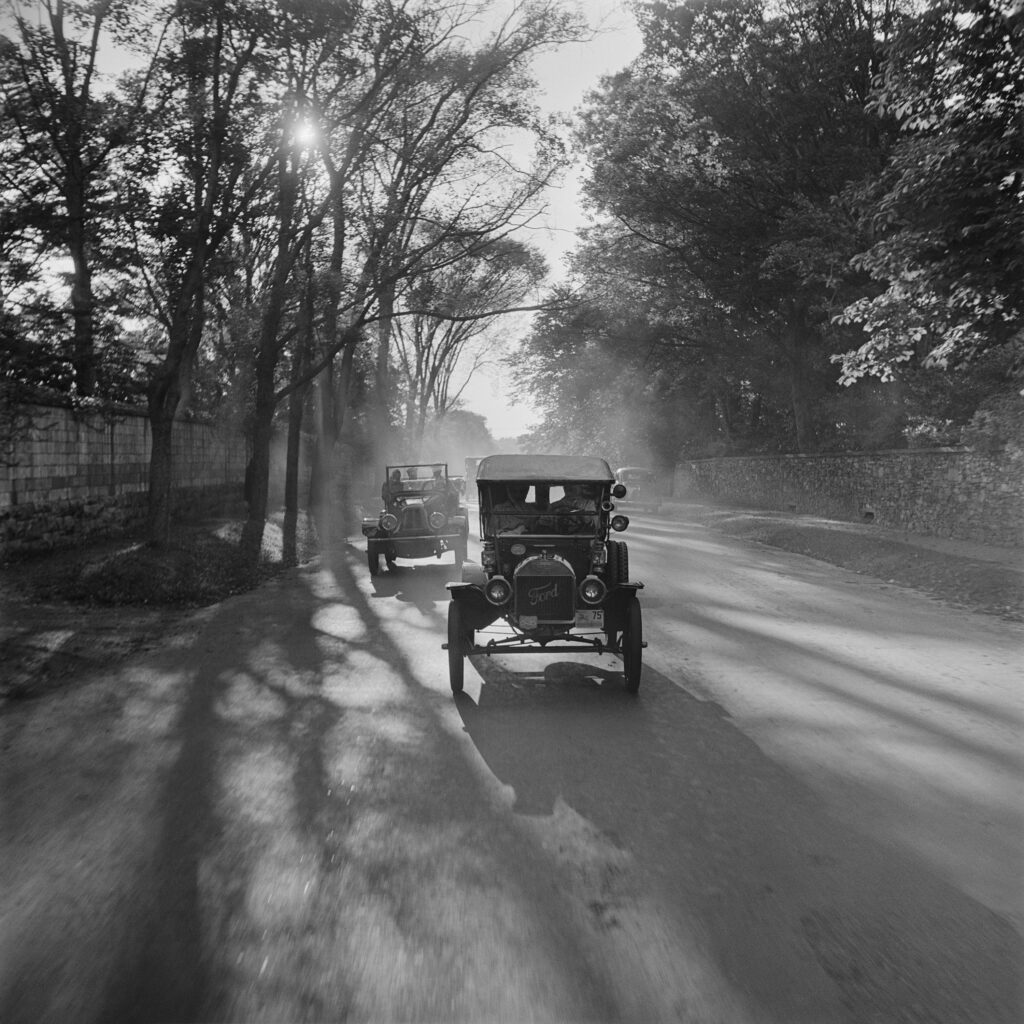
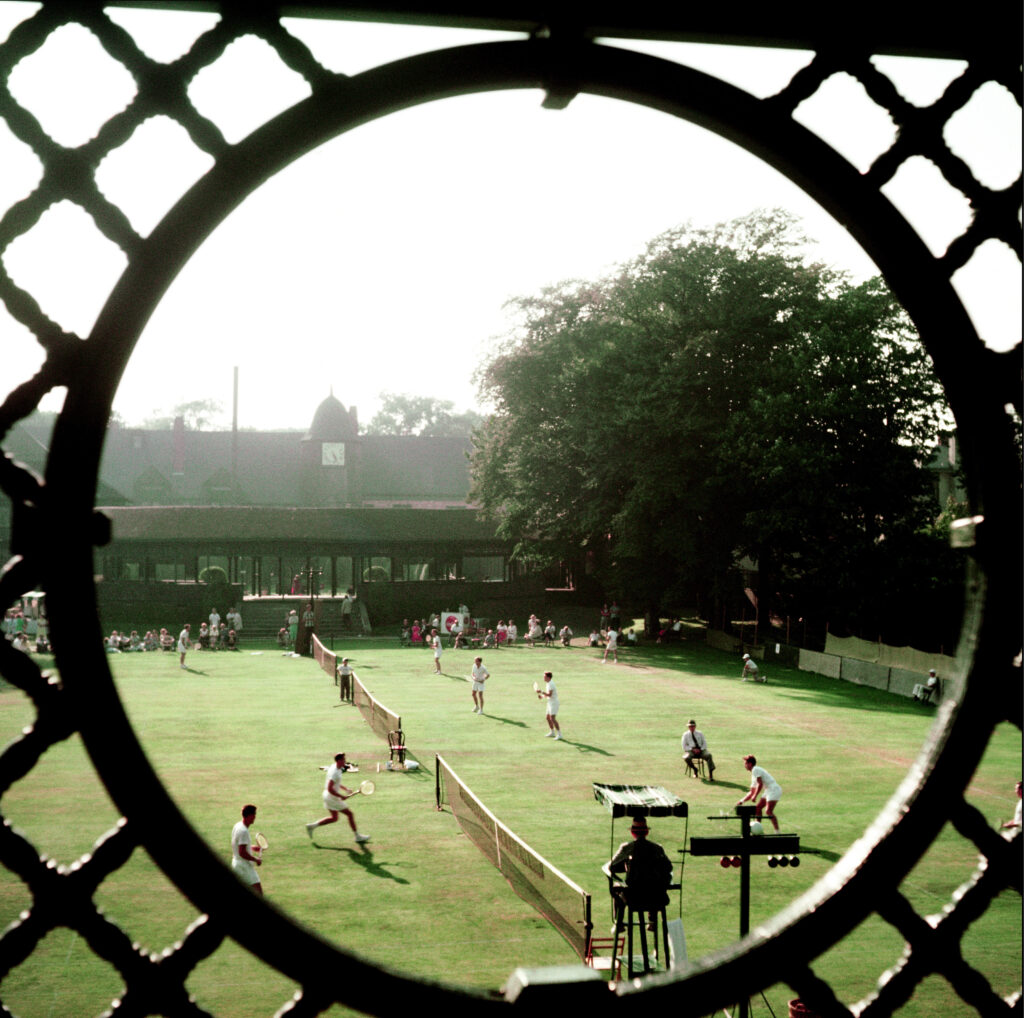
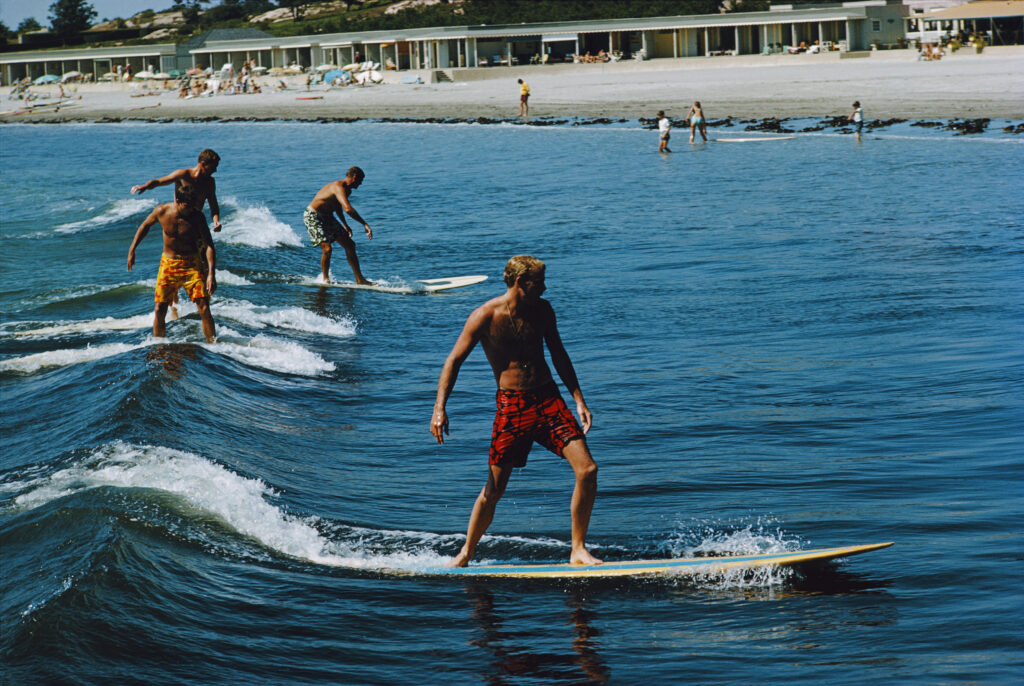
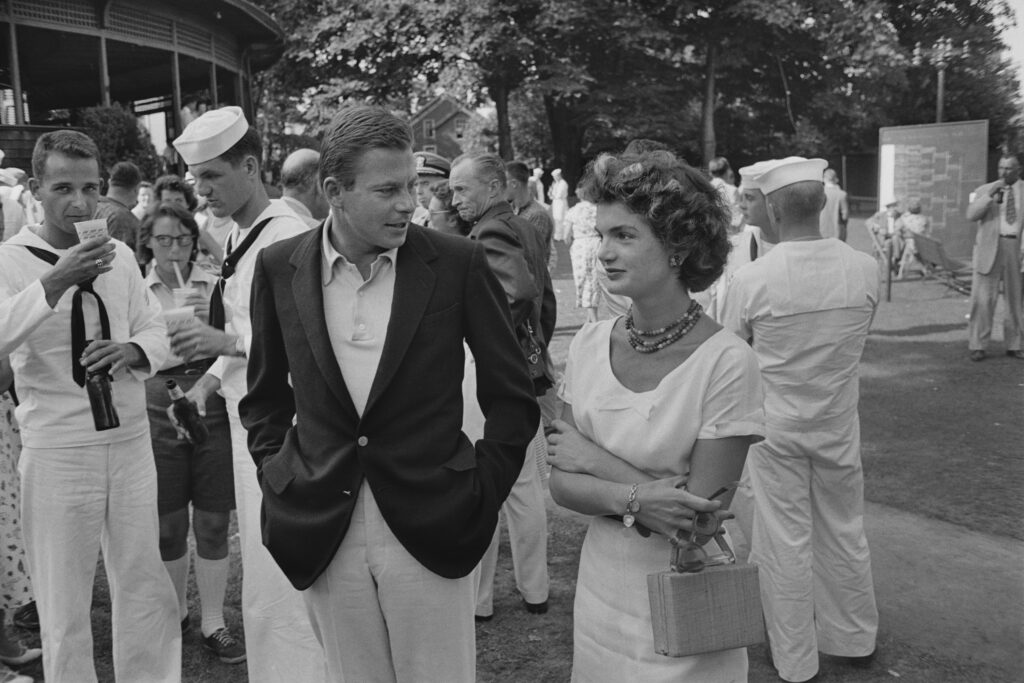
In partnership with Getty Images and in collaboration with Newport Curates, the exhibition features more than 75 photos spanning four decades of the famed photographer’s career, including many previously unseen images from time spent in Newport and New England.
Shawn Waldron, who oversees the Slim Aarons collection for Getty Images, poured over thousands of photos at Getty’s London archives (there are roughly three quarters of a million images in Slim’s entire archive, with about 5,000 digitized, many of them never published). Waldron is working on a series of localized shows featuring the photographer’s work, and Newport is the first installment.
“Slim had a long career — he worked for four decades plus,” says Waldron. “At his core, he was a photojournalist.” Throughout his career, he covered assignments for Life, Holiday, Travel & Leisure, and Town & Country, among others, traveling around the country and the world.
“My goal is to bring out and show people the other side of the archive,” says Waldron, noting Slim’s photographs span several eras and catalogue how society — and even his approach to documentary
photography — shifted and evolved.
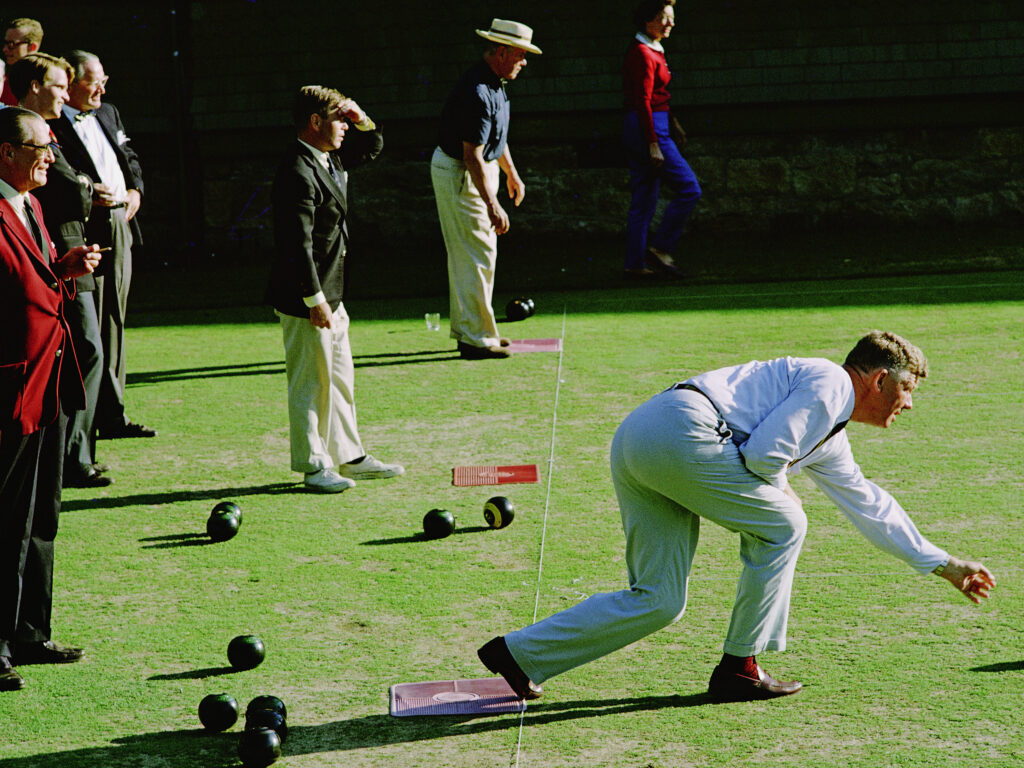
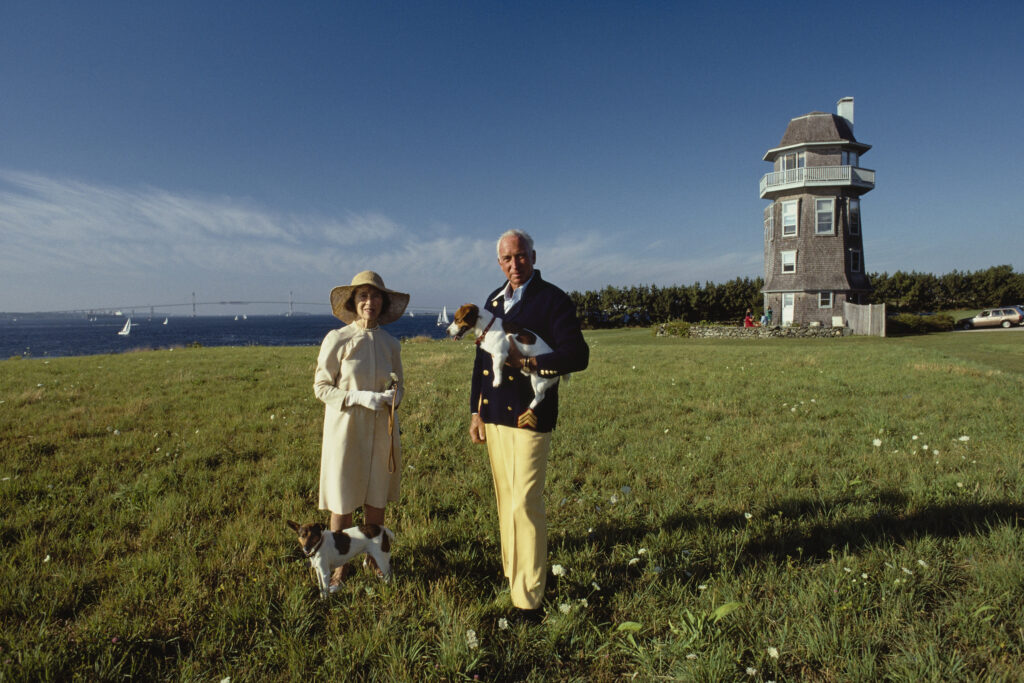
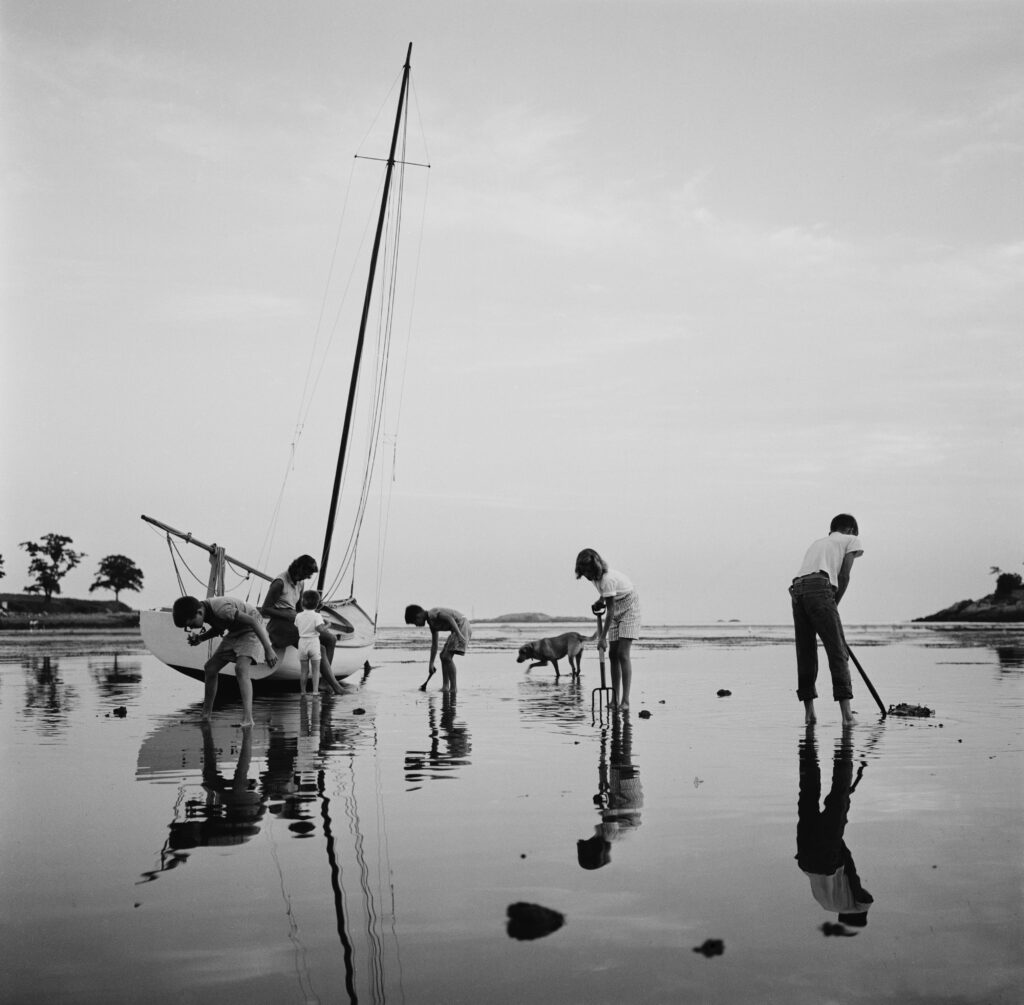
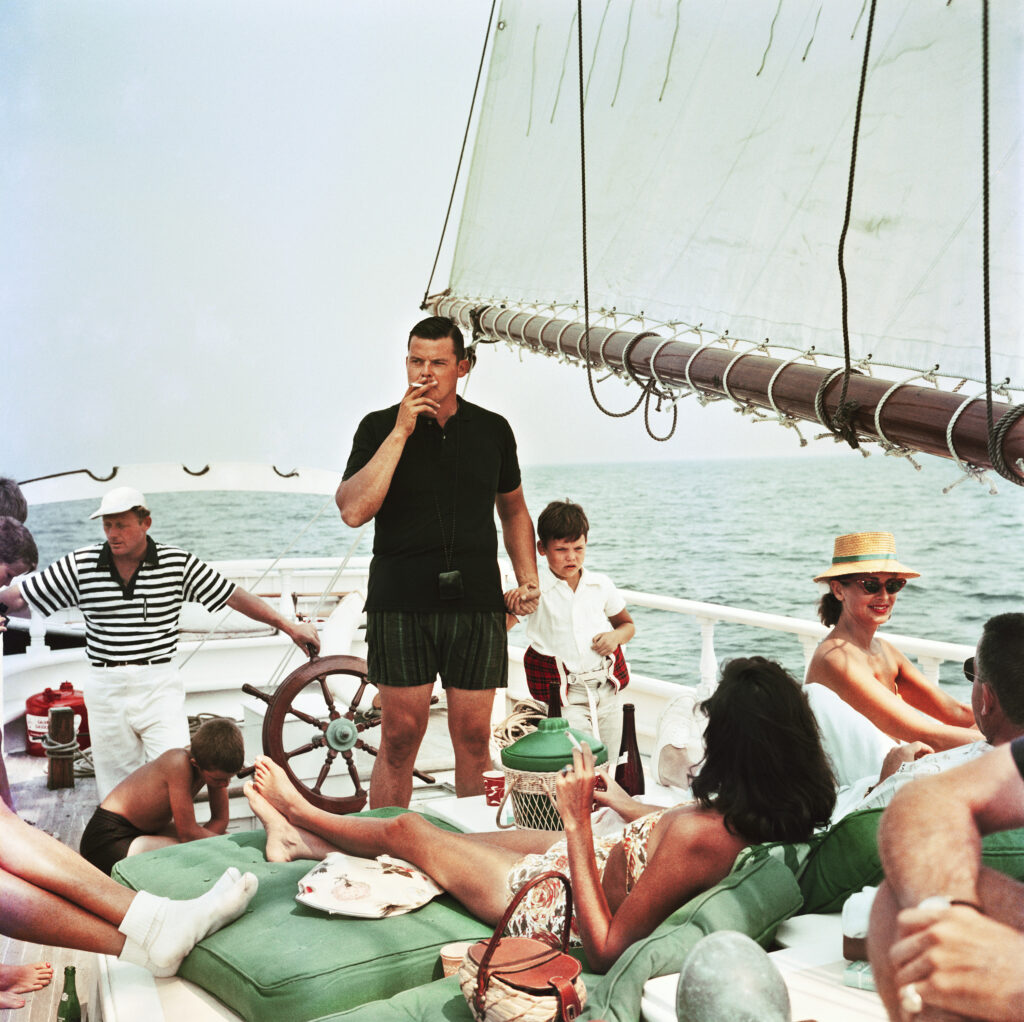
Sam Bolton of Newport Curates was instrumental in coordinating the show. His interest in Slim was piqued as a child when he first came across his mother’s copy of “A Wonderful Time: An intimate portrait of the good life,” published in 1974 and featuring Slim’s lifestyle photographs.
“It really sparked an early interest in photography and of course travel, but I was just as fascinated in how he achieved and orchestrated these amazing shots,” says Bolton. “So, it’s been a special treat to help put together the upcoming exhibition ‘Slim Aarons: Newport Days’ along with his archivist Shawn Waldron.”
One thing that surprised Waldron as he sifted through the archives was how often — and early — Slim had worked in Newport.
“I discovered he had been in Newport for Life magazine in 1947,” says Waldron. Aarons was here to cover the Glidden Auto Tour, featuring vintage cars of the moment, which traveled through New England to highlight the need for roadway infrastructure in the United States.
The tour began in Connecticut, traveled north, and concluded in Newport, with a big dinner at the Hotel Viking. Waldron found the menu for that event on Ebay, and it will be featured in the exhibition along with other artifacts, some loaned by Slim’s daughter, Mary Aarons.
Several images from that car tour, which were never published (a third of his work for Life was never published), will be featured in the exhibition, marking the beginning of four decades of Slim visiting and documenting Newport. The most recent photographs in the show were shot in 1987.
“As you walk around the room,” says Waldron, “you feel the passing of time.”

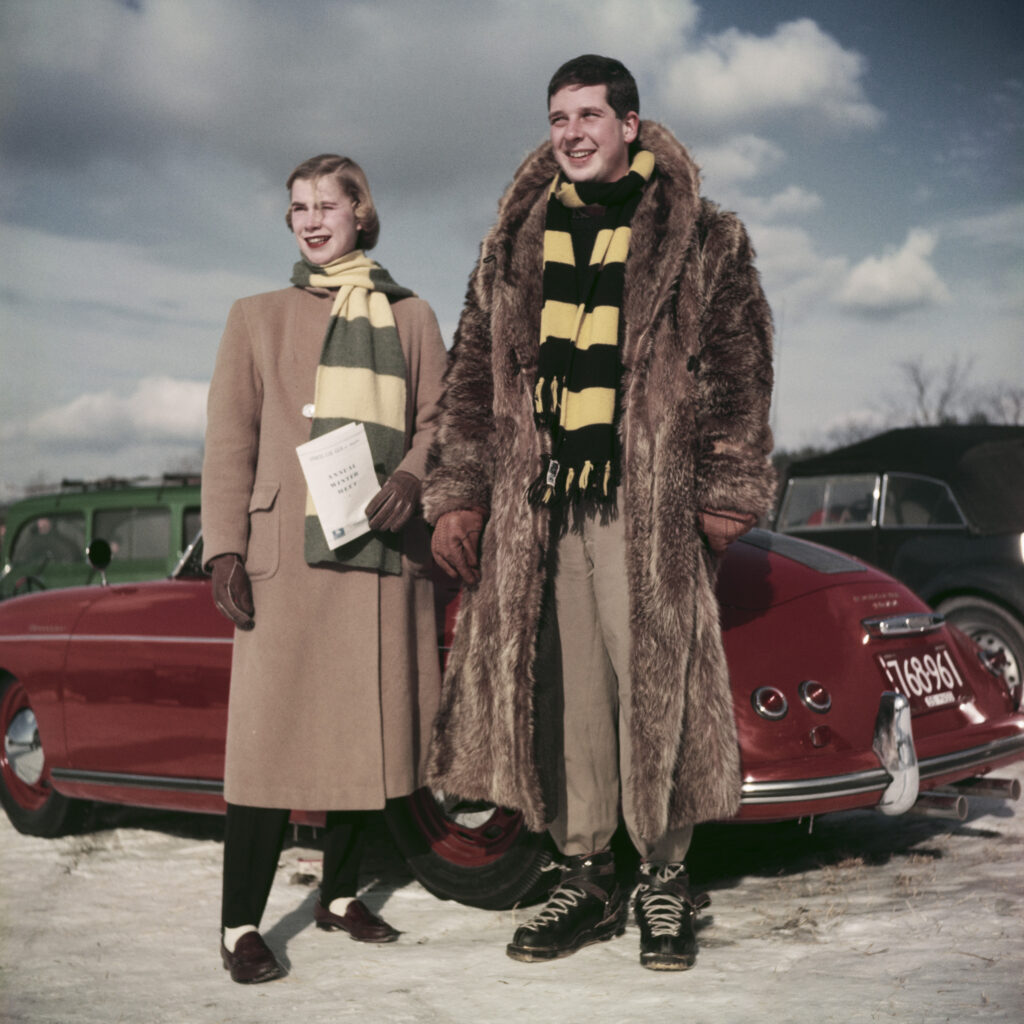
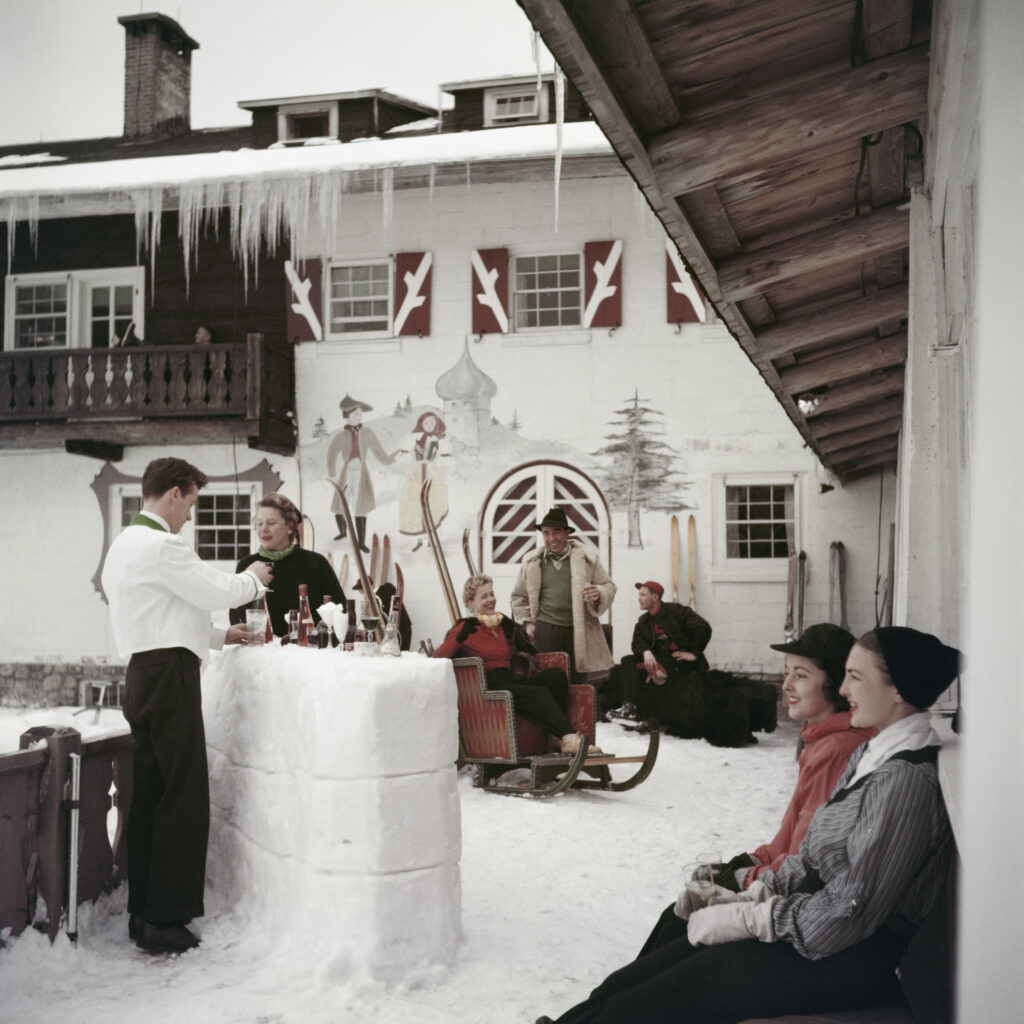
In addition to Newport summer scenes, there are a handful of images capturing winter ski culture in New Hampshire. “Slim always considered himself a Yankee — it was part of his mythology,” says Waldron.
The show follows in the footsteps of the Harry Benson exhibition in 2022, also in collaboration with Sam Bolton and Newport Curates, and the Russell Lee show in 2021, all documentarians “slightly out of the canon of fine art photography,” says Benedict Leca, executive director of the Redwood Library. “After 50 years, they are no longer just magazine pictures — they are worthy of attention for another reason.”
Slim’s work, says Leca, is especially compelling when considered in this tradition of documentation. “It’s a tricky moment in history to be dealing with leisure and ease,” he says. “Newport is the historic playground of the rich and the mighty. This is history nonetheless.”
The Redwood owns all the prints made for the exhibition, some of which will be auctioned off July 19 at the library’s summer gala.
“There’s something about Slim Aarons that’s hard to pin down,” says Leca, “there’s a level of escapism to it … a mythology of the way things were or might have been.”
Waldron is also the author of several books cataloging Slim’s work, most recently “Slim Aarons: The Essential Collection,” a hefty coffee table tome of 432 pages.
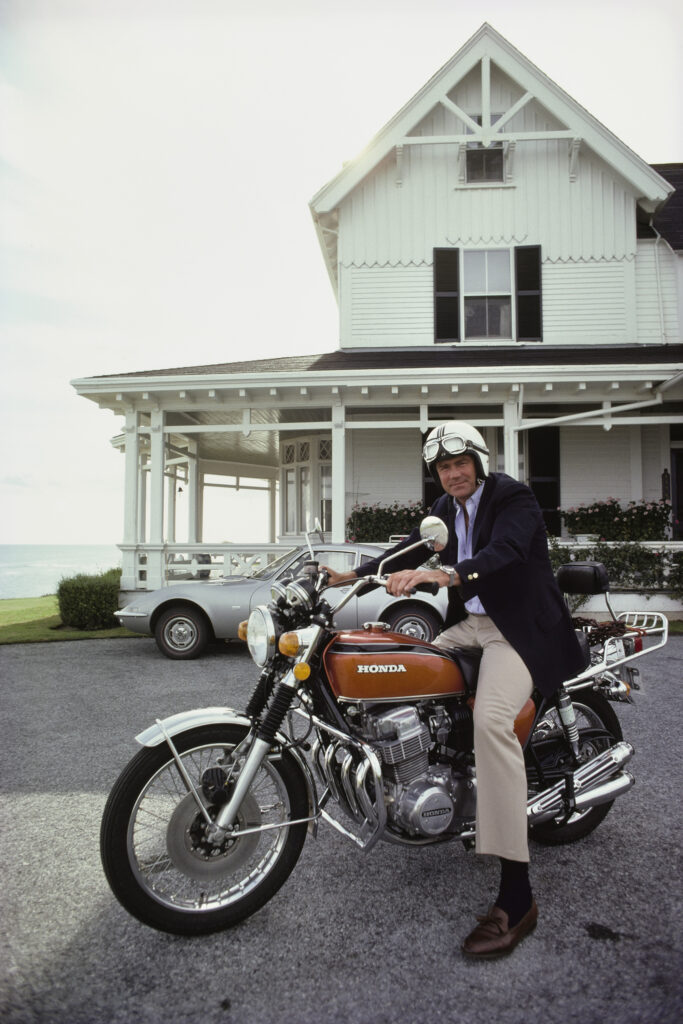
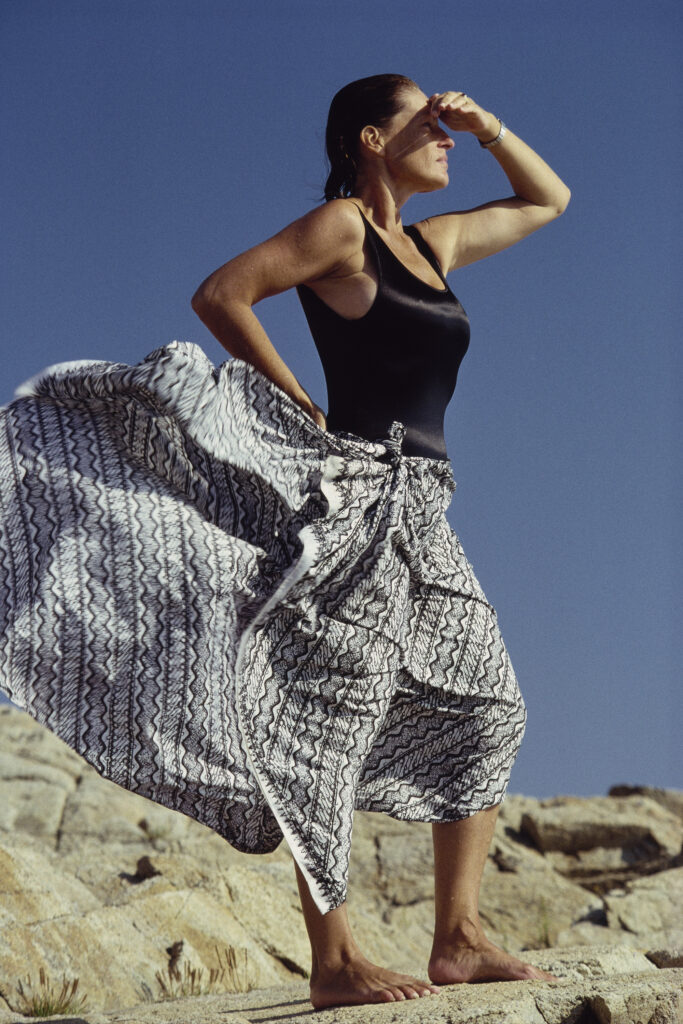
That book opens with a foreword by Maria Cooper Janis, daughter of Gary Cooper, one of four men captured in what many consider Slim’s most iconic photo, “The Kings of Hollywood.” It features Clark Gable, Van Heflin, James Stewart and Cooper at a New Year’s party in 1957 at Romanoff ’s in Beverly Hills. The men are laughing and seemingly having a grand time.
“His subject matter was beauty and glamour — the high life of Western society,” writes Janis. “Where there was elegance, wealth, celebrity, and opulence, Slim was allowed to capture all the players, because they knew he would not do them a nasty turn.”
What many might not know about Slim Aarons, as Waldron points out in his introduction and in conversation, is that his career began when he joined the Army Photography Corps in 1939. His first real media job was as a war reporter in World War II, where he earned a Purple Heart. And, despite going on to build a career documenting elegance and celebrity, at his core, he remained a combat journalist.
As Waldron writes in his introduction to the new collection: “the military taught him how to pack light, work quickly, and do whatever it took to get the job done.”
After the war, in 1948, Aarons helped Life magazine re-open its Rome bureau, which in many ways marked a pivot to lifestyle photography, and the beginning of decades spent documenting high society along the Mediterranean Coast, and around the world.
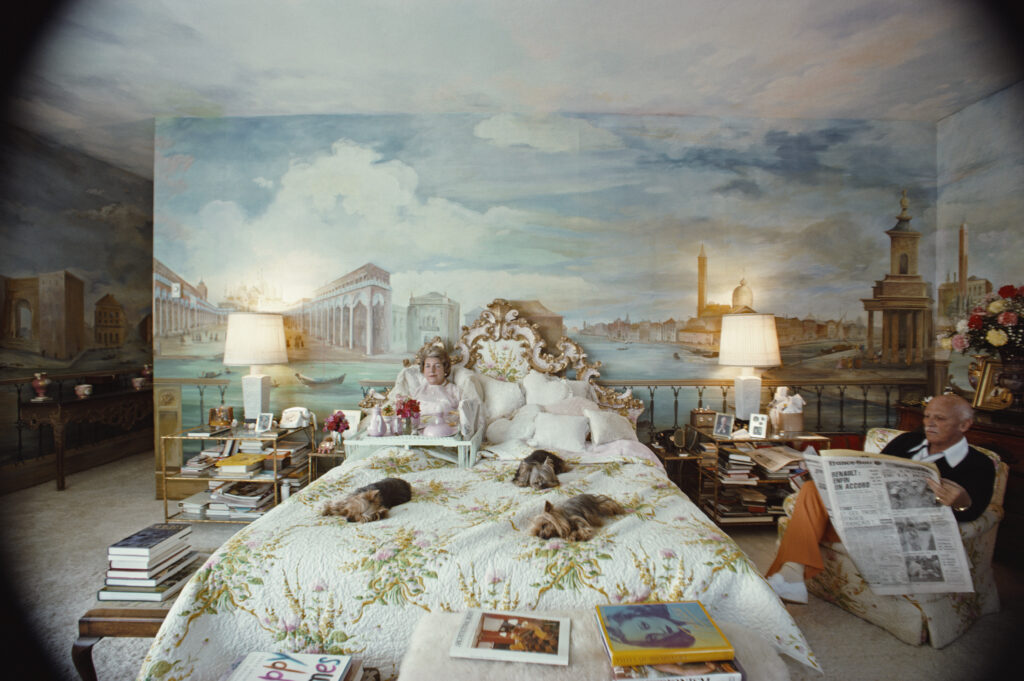
He went on to work for Travel & Leisure and Town & Country, which was the longest-lasting editorial relationship of his career; he was still on assignment for the magazine in the early 1990s. Lauren Hawk spent several years as Slim’s “assistant,” a term she uses loosely as Slim always did everything himself — carried his bag, reloaded his film, insisted on driving the car. In an essay titled “On Assignment,” included in The Essential Collection, Hawk recalls a trip the two took to Regensburg, Germany in 1983 to cover the christening of His Serene Highness Albert II, the 12th Prince of Thurn und Taxis, for Town & Country.
“We were a team of two: the renowned photographer Slim Aarons, then in his sixty-seventh year, and me. Though still in my twenties and with the magazine less than two years, I was gradually learning to hold my own with this inimitable photographer,” Hawk writes. “Little did I know that Slim and I would forge a working alliance that would last for more than a decade, and a friendship that would last until his death in 2006.”
Like Janis, Hawk reflected on his charisma and charm, as important a part of his approach to photography as the skills and technique he learned during WWII.
“This was why they loved him, the elite of the world: He could easily pass as one of them, and he exuded a near-aristocratic confidence; but above all, they knew they could trust him to make them look good,” Hawk writes.
Slim, however, remained a man of another world. He was born to Jewish immigrants in New York City in 1916 and briefly spent time in an orphanage with his brother during adolescence, facts that only came to light after his death. Later, he moved to rural New Hampshire and lived with his grandparents, Jewish
immigrants from Lithuania. Throughout his life, when asked about his upbringing, Slim notoriously said little, only that he was a farm boy and not close with his parents.
Slim worked continuously from the 1940s to the 1990s, documenting a lifestyle of leisure but rarely living one. Getty acquired Slim’s archives in 1997 after Mark Getty personally went to visit Slim at his longtime home in Katonah, New York.
“His influence is everywhere,” says Waldron, who also manages the Slim Aarons Official Instagram account, a platform that has helped pique interest in his work among a new generation.
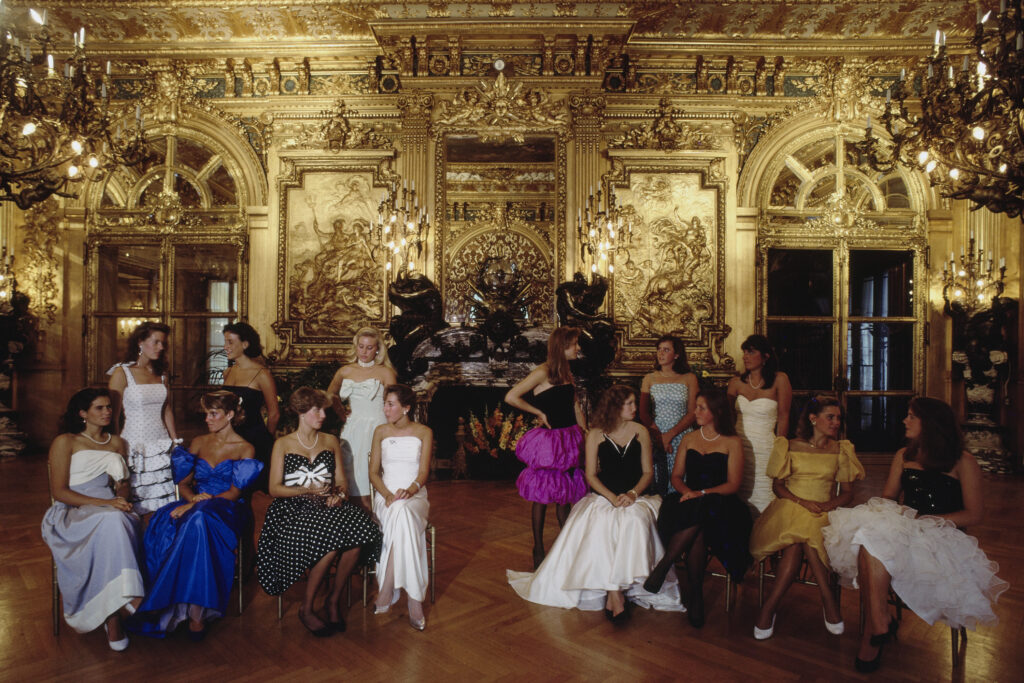
One thing the archivist would like people to understand about Aarons is that there is so much more to his career than a handful of iconic images.
“He spent so long to establish himself — he was a poor kid who grew up in New York, had never been overseas, except to go to war,” Waldron says, “everything he got, he earned,” with a lot of grit and hustle. “He shot from the gut.”
The exhibition will be on view in the Van Alen Gallery through Dec. 15, and entry to the Redwood is free. For more details about the show and upcoming events, visit redwoodlibrary.org.
